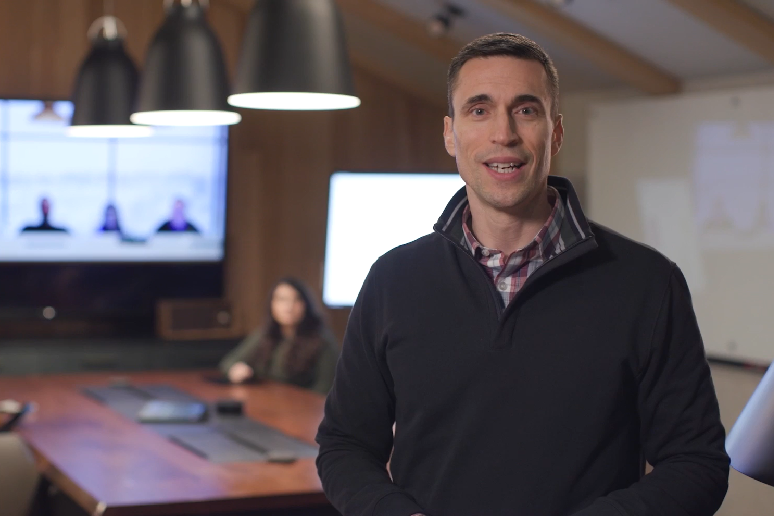As we reflect on a year of working remotely, many enterprise IT leaders, employees, and technology vendors alike are looking to the future and asking: What comes next? Today at our Enterprise Connect virtual event, Communications & Collaboration: 2024, Microsoft shared its answer to that question, detailing its vision for the future of work.
While we think of 2020 as the year work moved home, “in reality, it's the year work moved to the cloud,” Jared Spataro, corporate VP of Microsoft 365, said during Microsoft’s thought leadership address at the event (view on demand
here). Cloud collaboration services, like Teams, not only allowed employees to work safely from their homes but also will empower the future of hybrid working and work from anywhere, Spataro said.
Though many employees might be returning to the office in 2021, remote work has changed work forever, and enterprises can’t just rely on physical office spaces anymore, Spataro noted. To support this claim, Spataro cited Microsoft research showing that 80% of managers around the world expect to be offering more flexible working arrangements post-pandemic, and 70% of employees expect to take advantage of these arrangements in the future.
Video meetings became the lifeblood for many organizations during the pandemic and will continue to evolve as hybrid work becomes the norm, Nicole Herskowitz, GM of Microsoft Teams, said during her portion of the presentation. However, we’ve become too accustomed to the same video format for all our meetings, whether they are brainstorming sessions or customer presentations, she said. To better address the need for different meeting formats,
Microsoft has added features like enhanced presenter options, PowerPoint Live in Teams, dynamic meeting displays, and Together Mode.
Often collaboration goes beyond meetings and the walls of an enterprise. For the latter, Microsoft has Teams Connect, Herskowitz said. With Teams Connect, users will be able to collaborate, share content, and co-author documents with outside partners and stakeholders via shared Teams channels, she added.
For those workers who do return to the office, the office they return to might not look like the one they left. Spataro shared a vision for the future with a conference room configured to facilitate hybrid collaboration using Microsoft technology. In the room, a Surface Hub 2S device displayed remote workers to the in-room participants, and both types of workers used Teams whiteboarding capabilities to collaborate and brainstorm. And for remote workers who have a hard time identifying a speaker in a meeting, Microsoft recently announced an intelligent speaker feature for identifying an active speaker and adding their name and profile picture to the meeting transcript, Spataro said.
While saying “the future of work will be fluid, dynamic, and cloud-powered,” Spataro noted that simply having the right digital tools isn’t enough. To ensure a future where workers can collaborate freely wherever they are, he said, “business leaders need ways to foster trust, build social capital and culture, and to ensure that everyone is connected.”










